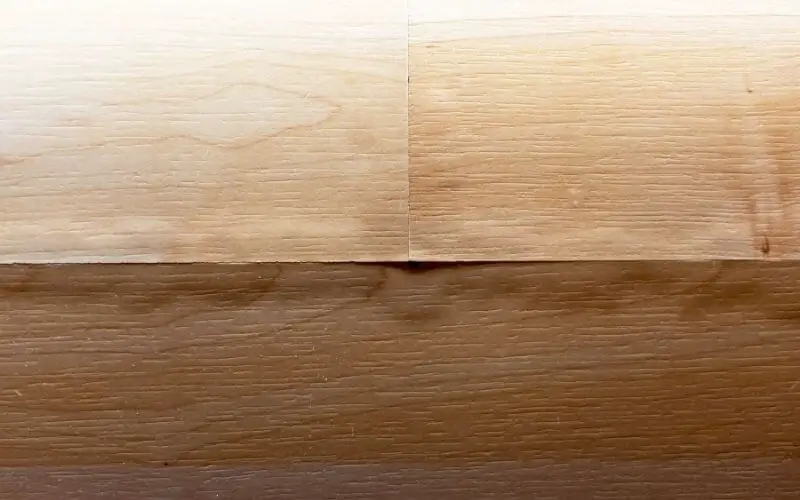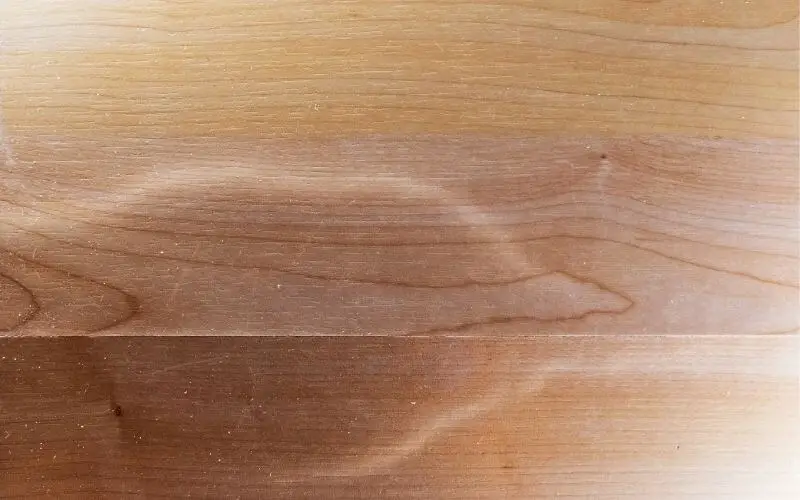Laminate flooring has a similar appearance and durability to hardwood floors, but it is more affordable. Although it is a viable flooring option, laminate flooring has its drawbacks as well.
It is partly made with wood, so laminate is susceptible to moisture damage, which could cause bubbling. If you notice your laminate floor bubbling at its earliest appearance, you need to know how to fix laminate flooring bubbles without replacing them.
Read: How to repair swollen laminate floor
How to Fix Laminate Flooring Bubbles Without Replacing
Table of Contents
Here’s a step by step guide on how to fix bubbling laminate floor without having to rip up the entire floor:
Start by inspecting the affected area and identify the boards that are bubbling or the specific part of the floor that is damaged. If a single board is affected, it might be due to the loss of cohesion between the layers.
To remove the damaged board, take out the wall molding first with a screwdriver or hammer. If you have snap and lock flooring, you only need to lift the affected board to remove it.
Replace the bubbled board with a matching new board, then seal the floor completely right after to prevent moisture penetration or direct water damage to the floor in the future.
For glued-down laminate flooring, wipe off excess adhesive completely after installing the new board.
Snap and lock floorboards are easier to replace and repair as you only need to remove the affected board; this gives you access to check the moisture level of the subfloor as well as the firmness of the locking system.
If your laminate flooring is inferior, it could cause the appearance of bubbles over a large area of the floor. In such cases, you may need to replace the entire floor with a high-quality laminate.
If the bubbling is caused by loose veneers, they can be fixed. Start by making them pliable by placing a damp cloth on the veneer and go over it with an iron until it becomes more pliable. But make sure to avoid cracking or damaging the floor in the process.
Apply quality wood glue under the veneer and hold it down with a clamp. Avoid ruining the process by placing cardboard in between the laminate surface and the clamp.
You can fix minor bubbles by “bursting” them. Do this by placing a damp cloth on the bubble and use a sharp knife to slit up the bubbled area slightly. Apply wood glue into the opening and place a weighted item over the veneer overnight so that it is flattened completely.
Peaking, which is another cause of bubbling, can be somewhat fixed or flattened by placing a weighted item over it throughout the night.
Peaking is usually caused by expansion, so to be able to fit the plank back in place after the bubbling is flattened, you may need to trim the edges slightly. Removing the molding around the floor will also create the needed space.
Read: How to dry laminate floor with water under it
What Causes the Laminate Floor to Bubble-Up?
There are different reasons your laminate floor may swell, bubble up, and even buckle; identifying the causing factors will help in preventing their occurrence.
Moisture Problem
High-moisture or humidity level is the common cause of bubbling up on laminate floor. This could be caused by leaky pipes under the floor or a bad moisture barrier, exposing the laminate to too much moisture. This causes swelling over time.
Constant spillage of water that isn’t cleaned up promptly can also cause this issue as the laminate base can’t withstand water.
Read: How to fix laminate floor water damage
Delamination
Delamination could also cause swelling and bubbling of your laminate floor. If the laminate planks are not installed correctly or damaged during installation, the laminate base may swell.
Absence Of Gap Between Each Plank
Laminate planks expand over time due to the temperature change, so you will need to leave gaps during installation; without expansion gaps, the planks may start lifting. This bubbles up the base of the laminate base and causes it to swell.
Lack Or No Expansion Joints
Laminate floor installed in a large area requires a gap between the joining section to create an exit for air trapped under laminate planks during installation; preventing the free exit of air can cause the surface to swell.
In general, poor installation of laminate planks causes the bubbling up of the laminate base. Do not cover up the venting system of the floor with the planks or install the moisture barrier poorly. All this causes the surface to start bubbling up over time.
Read: Pros and Cons of laminate flooring
Conclusion
You can fix laminate flooring bubbles without replacing the entire floor by first identifying the cause of the bubbling in the first place.
This tells you the needed line of action; bubbling caused by loose veneers can be fixed by simply running an iron over the affected area. However, not all fixes are that simple, and you will need to replace badly damaged boards.

